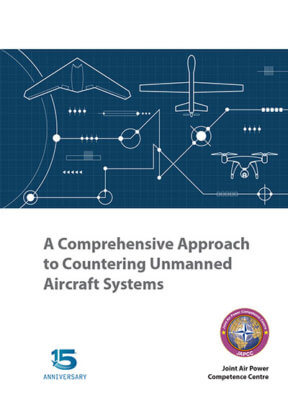If you were attending a conference or meeting about Countering Unmanned Aircraft Systems (C-UAS) in the last three years (and there were a lot), for sure you heard this sentence. However, this used to address only one narrow aspect of the whole problem, i.e. the impossibility of technical providers to propose one single system that would solve the problem in its entirety and forever.
C-UAS is a wicked problem, as it involves a multitude of aspects and problems for which solutions are not trivial or not practical in many typical scenarios. Think about the different legal implications of a C-UAS operation in peacetime within NATO territory, or in an expeditionary conflict; or the incredible pace of development of the commercial and recreational drone market that makes deployed countermeasures ineffective after only a few months. Think about the ongoing developments of the so-called ‘second drone age’ in which all competitors, from peers to terrorists and non-state actors, will include drone technologies in their standard tactics and concept of operations, challenging the traditional air superiority in most of the conflicts. Think about the upcoming drone arms race, in which drones and counter-drones manufactures will fight to deploy the smartest and most innovative technologies, bringing the current C-UAS issue to new heights, transitioning towards novel domains and concepts, from electronic to cyber warfare, from kinetic to directed energy weapons.
It is known that wicked problems cannot be solved but can only be tamed. To tame the C-UAS problem, the only possibility is to have a profound understanding, to anticipate trends, to imagine the desired end state and work towards it. I would argue that the famous ‘silver bullet’ is exactly this: awareness, experimentation, preparedness, cooperation, coordination, and capability to adapt. C-UAS demands for more cooperation at every level: at the technical level, where single solutions are never effective if not integrated in a broader defense-in-depth context; at the tactical level, to make sure that countermeasures are effective against the threat without fratricide and collateral damages; at the operational level, as C-UAS needs seamless integration at the verge of multiple domains; finally, at the strategic level, as a whole of government approach is essential to cope with the threat.
This is what the NATO C-UAS Working Group has been trying to do since its establishment in 2019. In the course of the past two years, it has become a trusted forum where Allies exchange views, cooperate and learn from each other. This is also the ultimate scope of this book: it gives multiple perspectives from different stakeholders, military, law enforcement, industry and academia, and encourages cross-domain thoughts and mutual understanding.
As this subject is entering a novel level of maturity within NATO, the work collected in this book will certainly help in addressing the future challenges and to provide answers to the many questions that, collectively, will need to be answered.
Dr Claudio Palestini
North Atlantic Treaty Organization,*
Emerging Security Challenges Division,
Countering Unmanned Aircraft Systems Working Group
*Contents of this book reflect only the views of the authors and do not express any official position of NATO. JAPCC is providing an independent thought and analysis and the book is intended to initiate and contribute to the on-going discussion about the topic.











